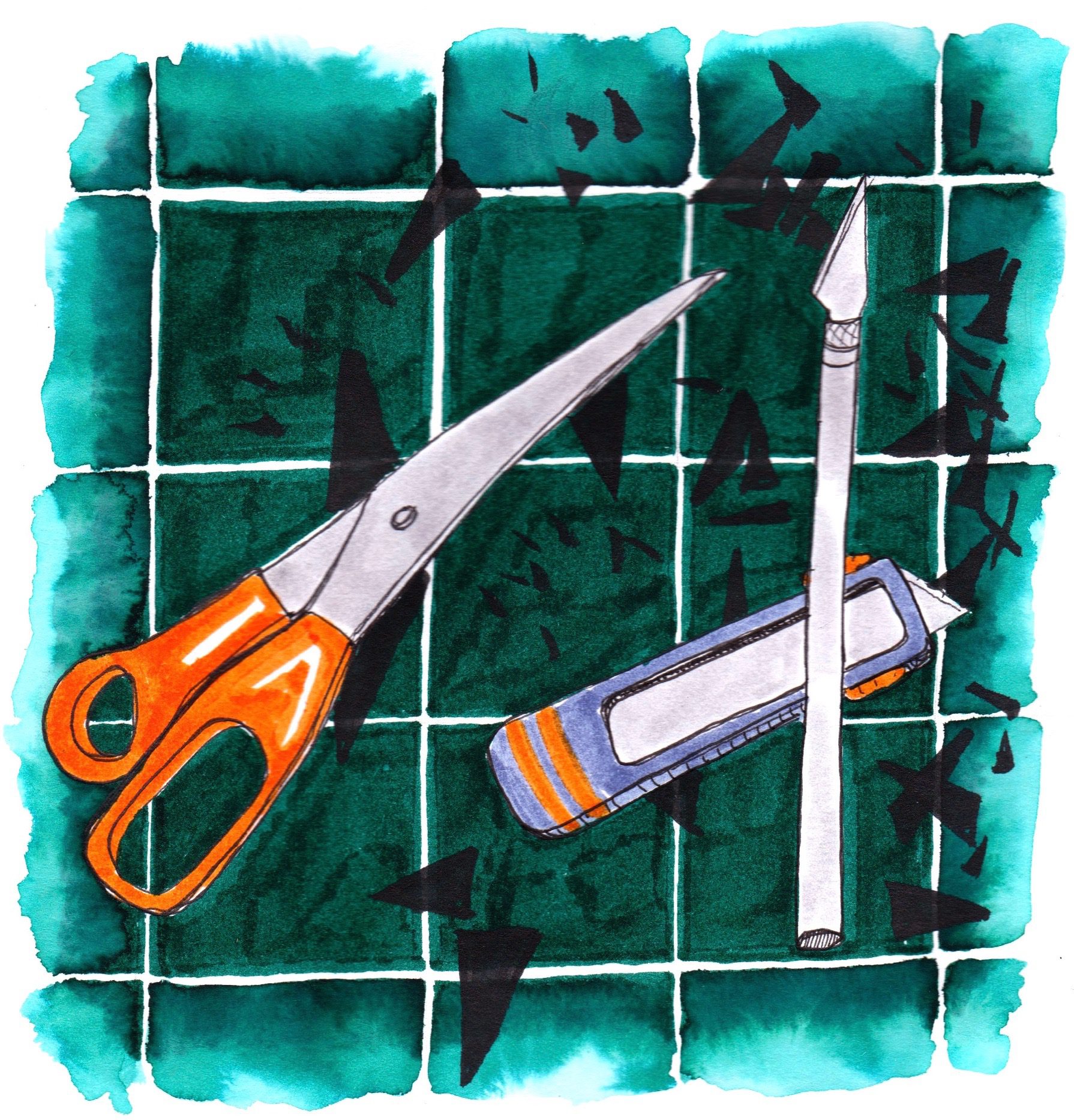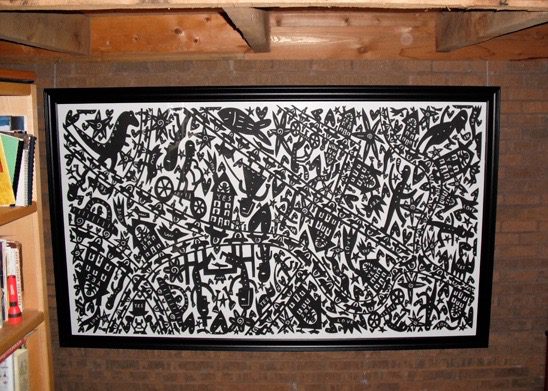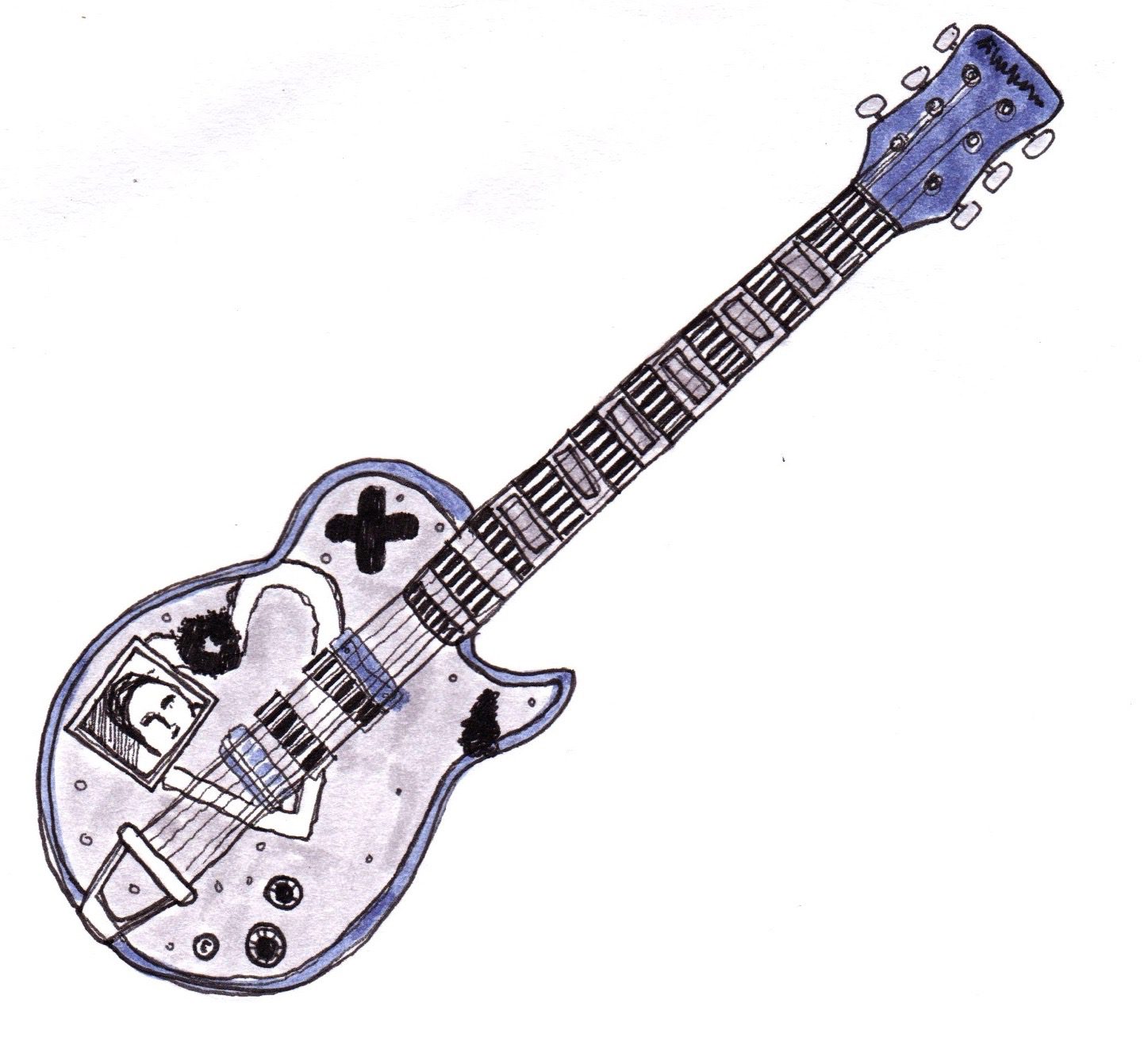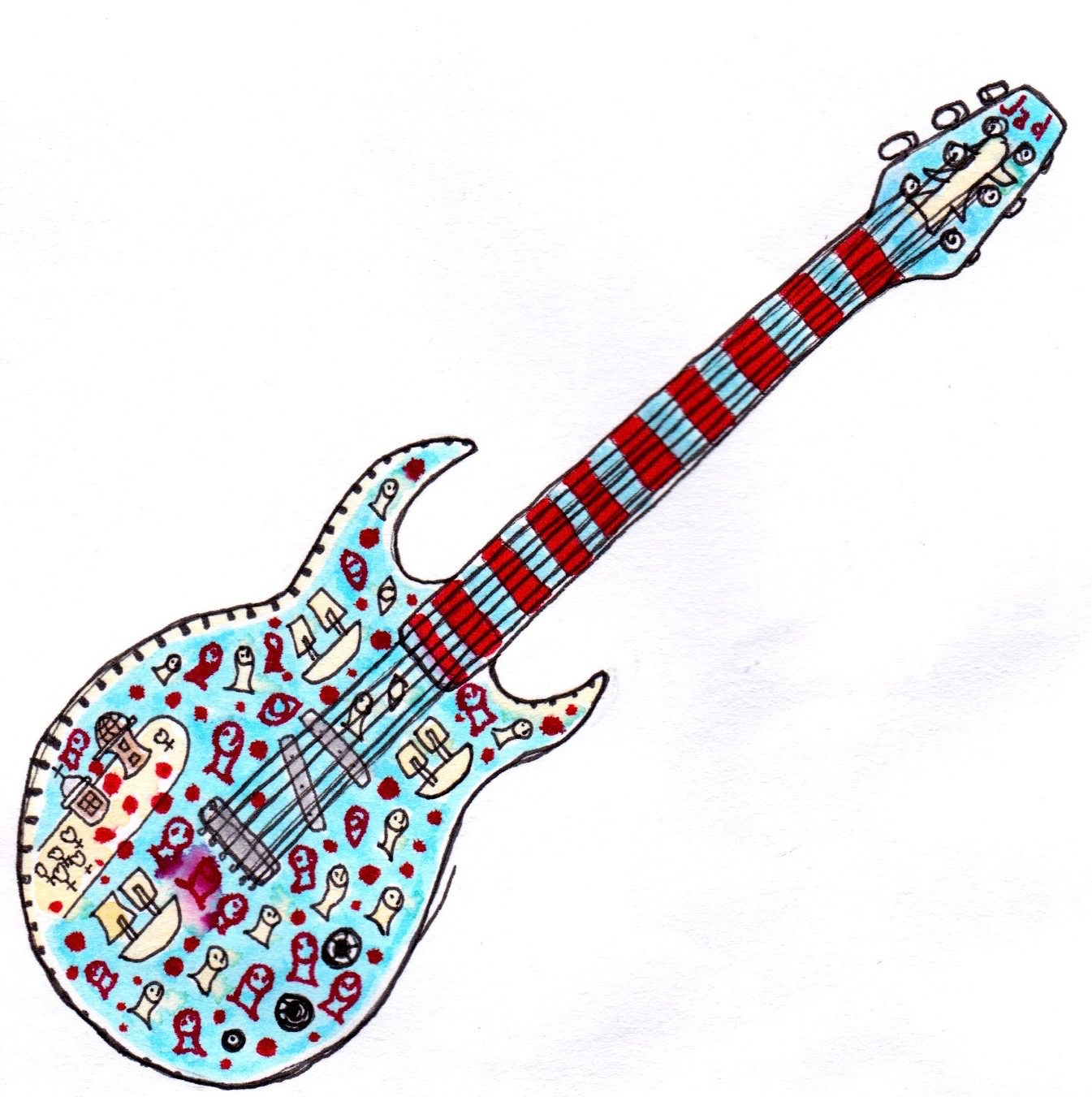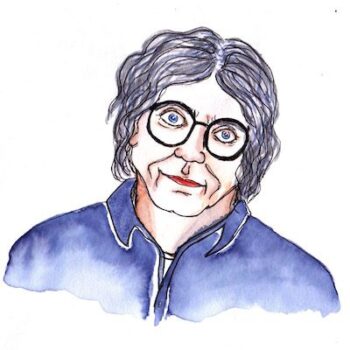
Around 1987, I was touring a lot with Half Japanese, and I wanted to have something to do while traveling in the van. I tried reading, but it gave me headaches. I’ve always been interested in drawing, so I also tried that, but it was too hard to keep my hand steady in the van. Then I tried using paper and scissors, and I found I was able to make it work. I’ve become so fond of paper cutting! I work on cuttings almost every day.
A lot of paper cutters will use small, very sharp sewing scissors, which are good for detailed work, but if you’re cutting through several layers, larger shears work a good bit better. An X-ACTO blade makes it easy to go at an angle, but it’s not as good if you’re doing multiple layers. As for other supplies, the paper should be acid free, and I tend to go for black because it’s more fade resistant than other colors like red or yellow.
Over the years I’ve done thousands of paper cuttings. Sometimes they can be rather simple, and I don’t even need to sketch them in advance. But I’ve also done rather intricate work, and large cuttings too.
My biggest was made for the Grand Rapids Art Museum. When we first talked about doing the project, I asked them how large it could be, and they said the bigger, the better. So I asked a local framer what was the largest size frame they could make for me. They originally said 8×4 feet, so I made the piece for that size. It took me about a month, and I sent it off. But then the framer called me and said they’d made a mistake—the largest they could do was only 7×4 feet! So I had to rush to make an entirely new piece in time for the exhibition. I did it in only a week and a half.
Fortunately, with both visual art and music, I’m fast at what I do. This year I’ll be releasing albums by Half Japanese, a couple of albums with my brother David, one with Hifiklub, another with Kramer, and a couple with Tenniscoats. When I’m recording I’m always aware that my time in the studio is limited, so I come in ready to work. My music has been called “lo-fi” or “alternative.” I think part of the appeal is that it comes across as natural, not overthought. I keep pretty busy and have a lot of things I’m working on.
Like a lot of other bands, when Half Japanese first started out, we did cover songs. But we always wanted to sound like ourselves, so we never tried to emulate other musicians. You might think it’s easier to sound like yourself than to try to sound like someone else, but for a lot of people it’s actually more difficult.
The first guitar I ever owned was a second hand Silvertone. I was in college and a friend of mine was selling one for like $40 or something very cheap, which was important for me because I didn’t have a huge budget. But I enjoyed playing it, and it gave me a really nice sound—my sound.
I’ve had other guitars since then, but I got the one that I’ve probably been most associated with around 1989. I was doing a lot of work back then with a band in Scotland called The Pastels. While I was there I bought the guitar for about $30 from a thrift store. I think it was the only one there, and I didn’t try it out or anything. I just remember liking it because it wasn’t quite full size, which appealed to me since I could travel with it easily.
I think it may have been white when I first bought it, but I took it over to the drummer Katrina Mitchell’s flat, and she had a painting of a seascape on the wall that her mother had made. I thought it was a nice look, so I painted a seascape on the guitar with boats and fish and a lighthouse.
After so many years of playing the seascape guitar, the neck started to come loose. At first I tried putting it back together with Velcro. That was nice and convenient because airlines are charging so much these days to transport guitars, and I could fold it up and pack it right up into my suitcase. And sometimes I’m when I’m traveling in countries where I don’t have proper work papers, it pays for me not to look like someone walking around with a “professional” guitar…
But the downside with Velcro is that the neck is either on or off, so I came up with another idea: rubber bands. I can now bend the guitar, and snap the neck right back into place, and even get an interesting wah-wah sound that would be hard to get any other way. Here’s a little clip of me demonstrating at SXSW:
Having done many shows, I can tell you it’s so easy to perform when things go right, but what if they don’t? I’ve done a few shows where I’ve purposely tried to make it harder. It’s a learning experience. I did a show in Baltimore with my hands tied behind my back, and for a show in Seattle I cut through my guitar strings with wire cutters on the first song. Going into it I had no idea of what I would need to do. I just knew it would force me into doing something to try to make it work. Both shows went well! To this day, I rarely tune my guitar and I never change strings during a show. I just keep going!
Some people have described my music as joyful, and I think that’s true. Maybe it’s because when I make things I’m not fearful or afraid of failing. I certainly have failed before, and certainly failure isn’t my goal. But failing isn’t necessarily a bad thing. You can learn from it. If you’re doing what makes you happy, it’s easier for you to be happy, and if you’re lucky, to make others happy too.
***
Wanted/Needed/Loved: Musicians and the Stuff They Can’t Live Without is an illustrated column where musicians share the stories behind meaningful objects. As told to Allyson McCabe and illustrated by Esme Blegvad.
***
Along with his brother David, Jad Fair co-founded Half Japanese in 1974. His musical career has also included collaborations with Daniel Johnston, Teenage Fanclub, Moe Tucker (of Velvet Underground), Thurston Moore, Yo La Tengo, and many others. As a visual artist, Fair has designed many of Half Japanese’s album covers, his paper cuttings have been exhibited all around the world, and books of his artwork have been published in the US and internationally. Fair also records custom songs for fans! More information can be found on his website.

